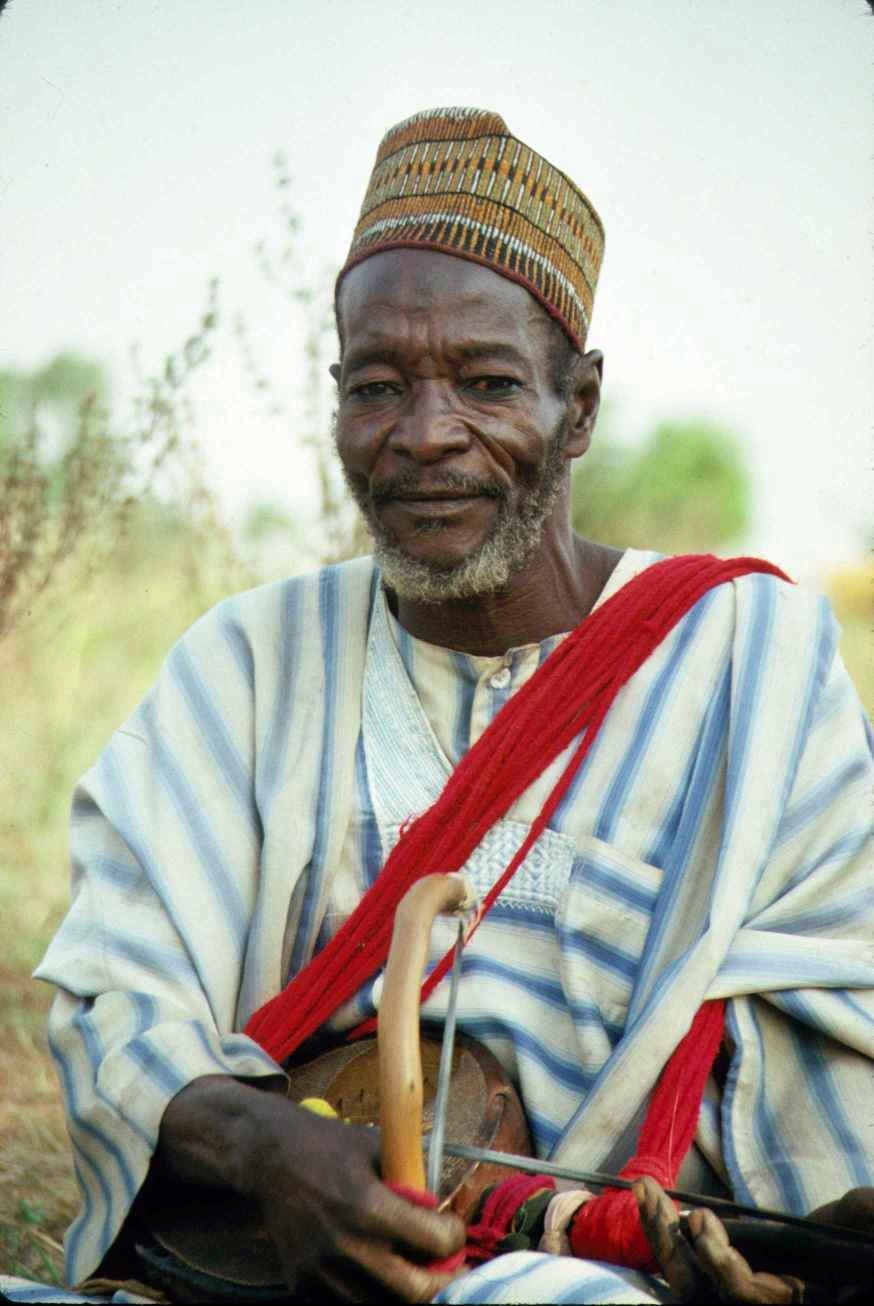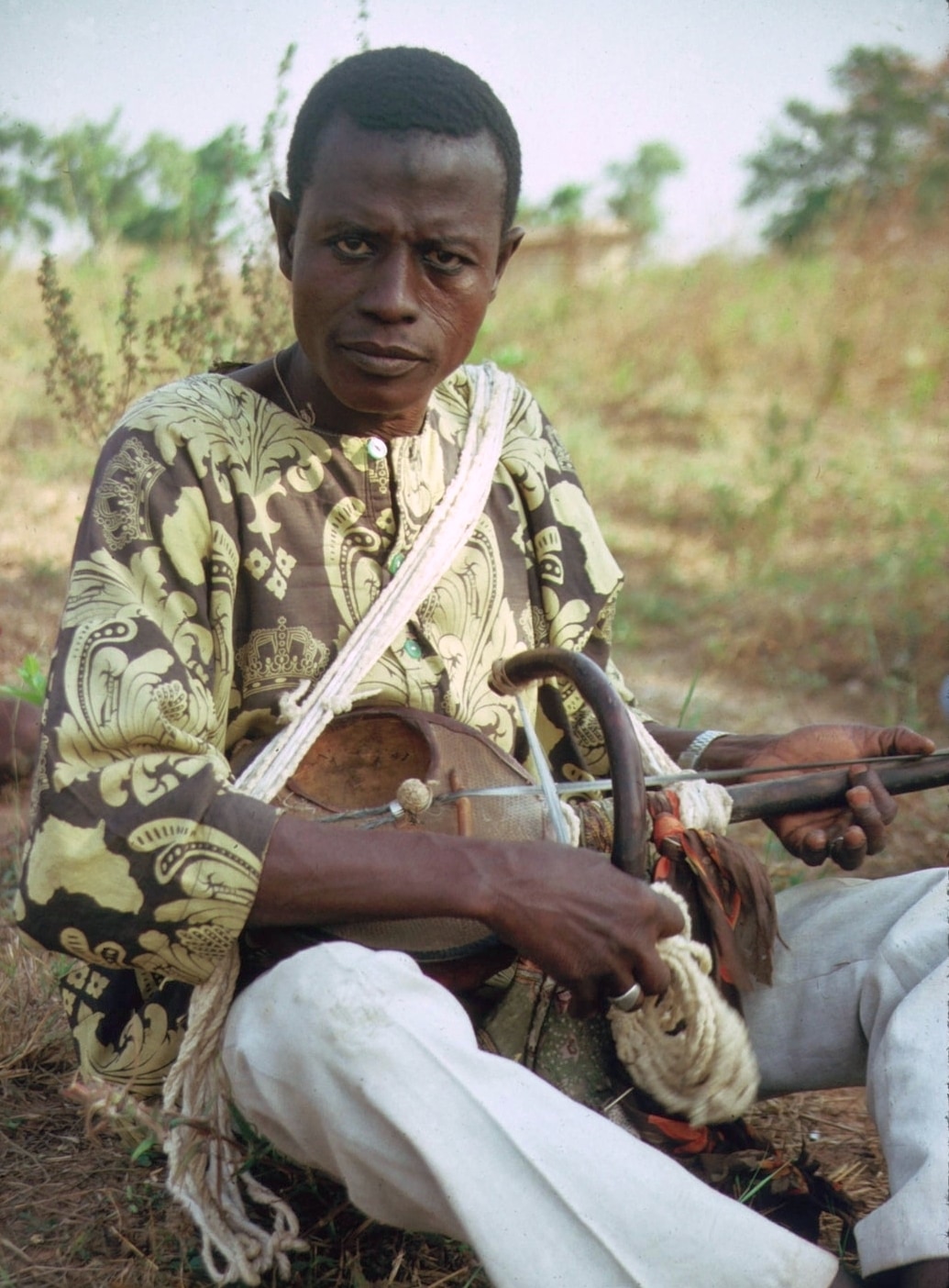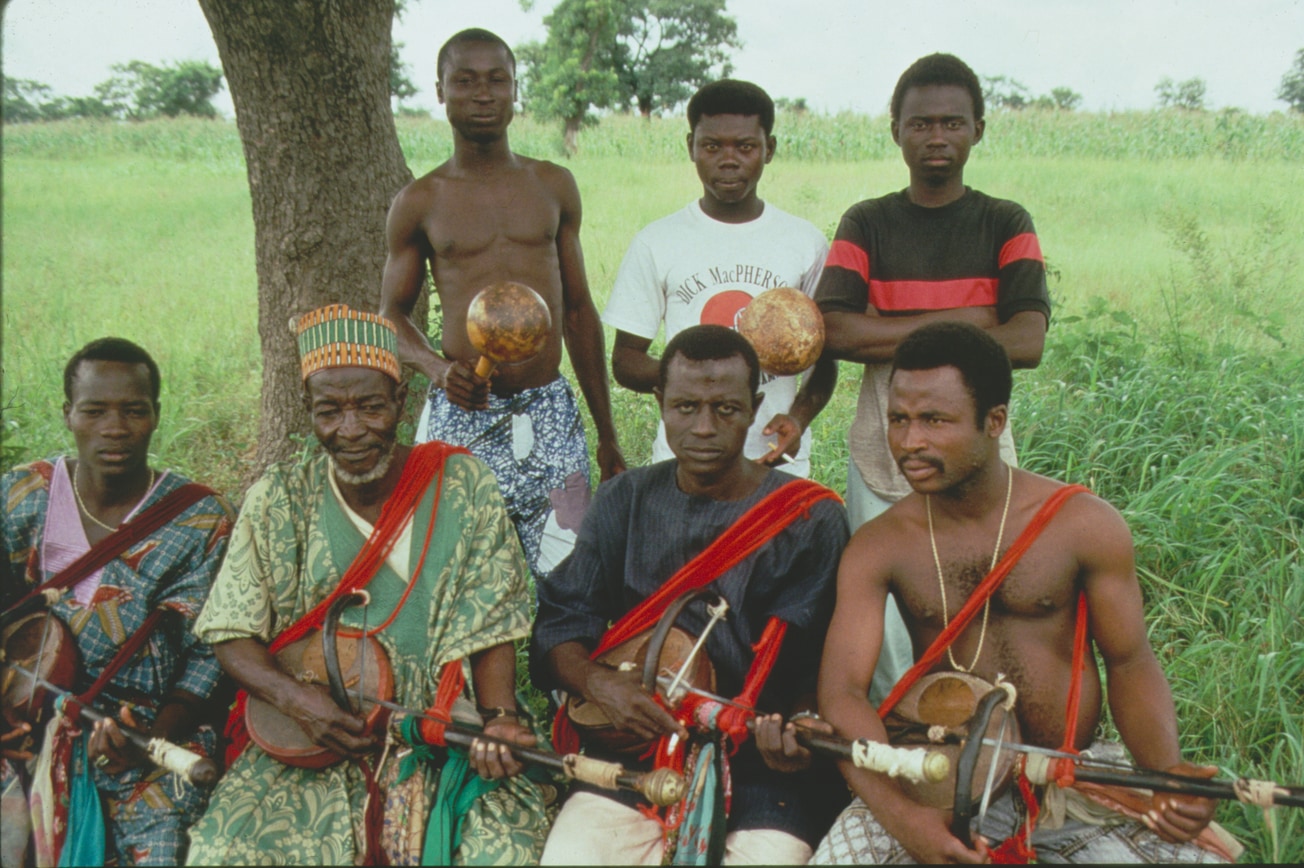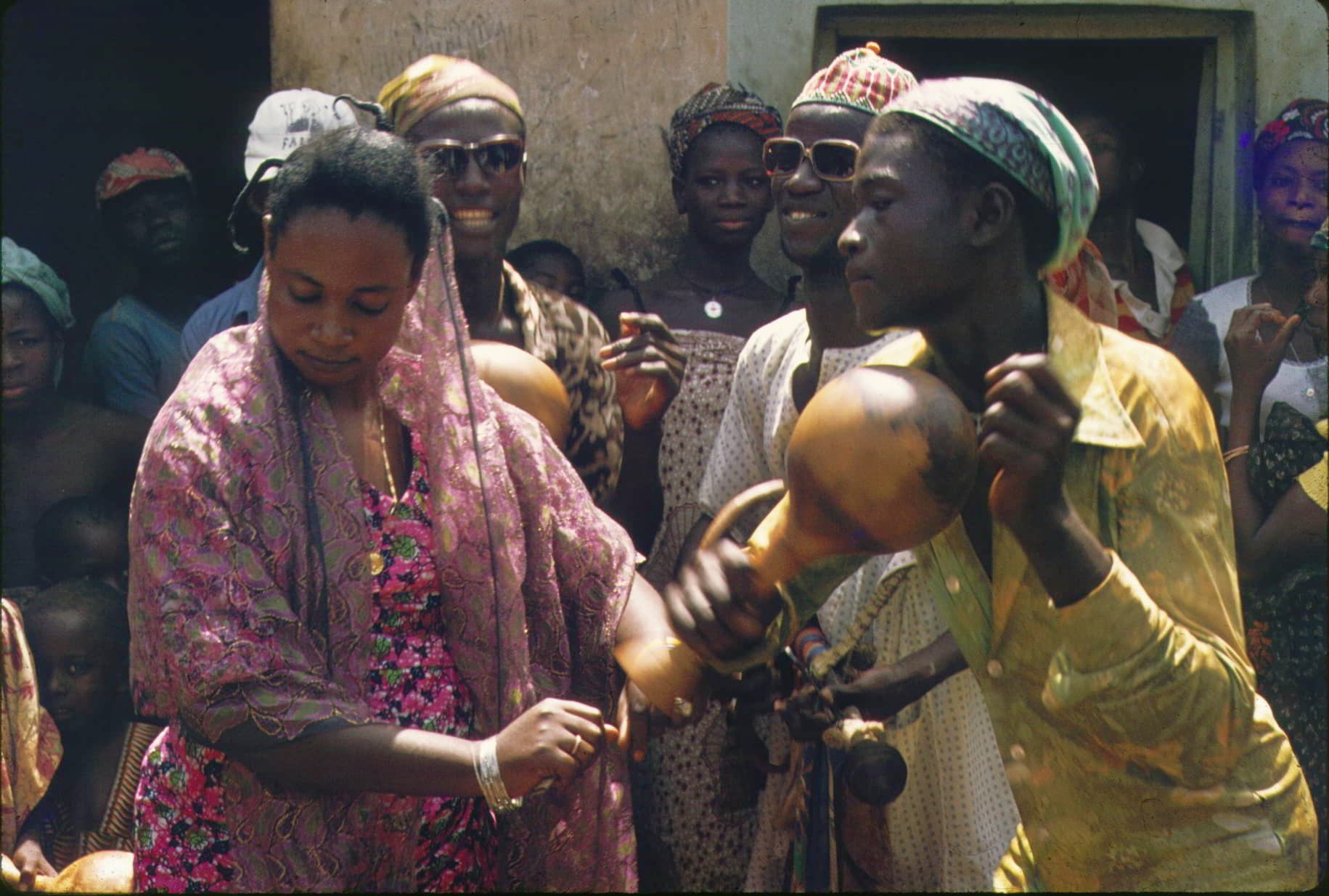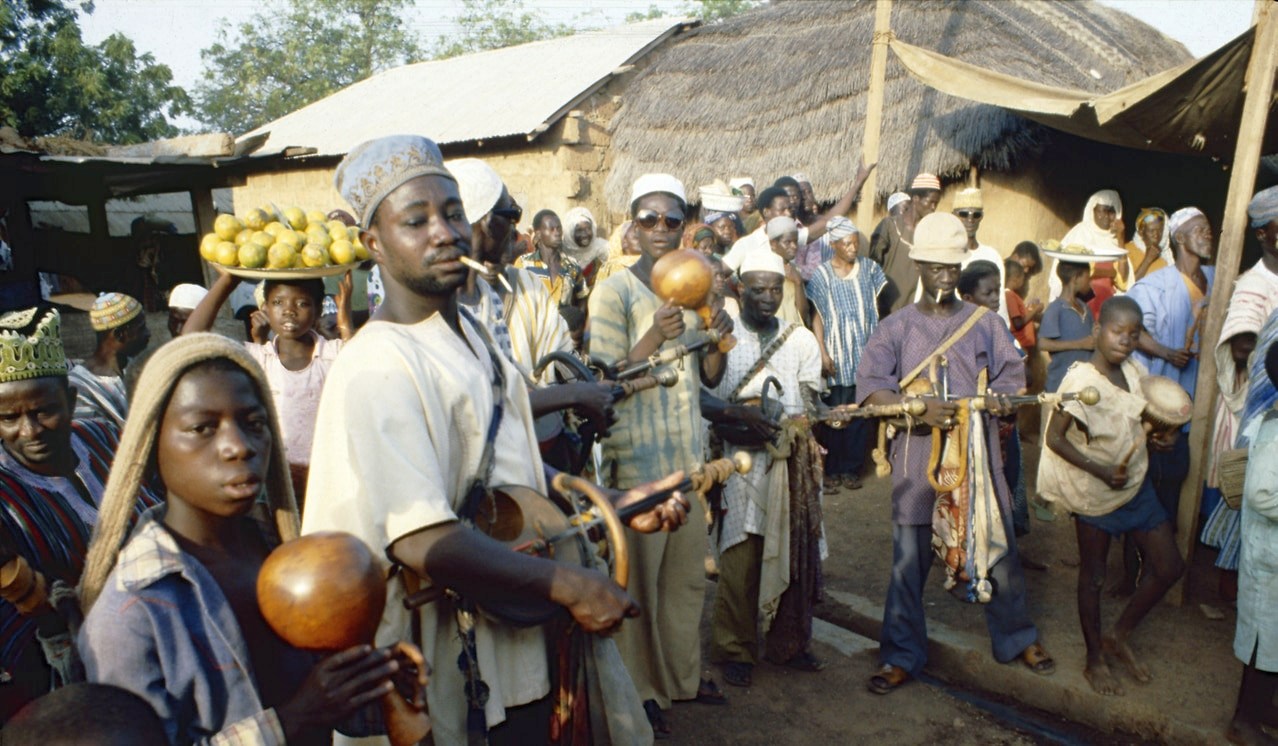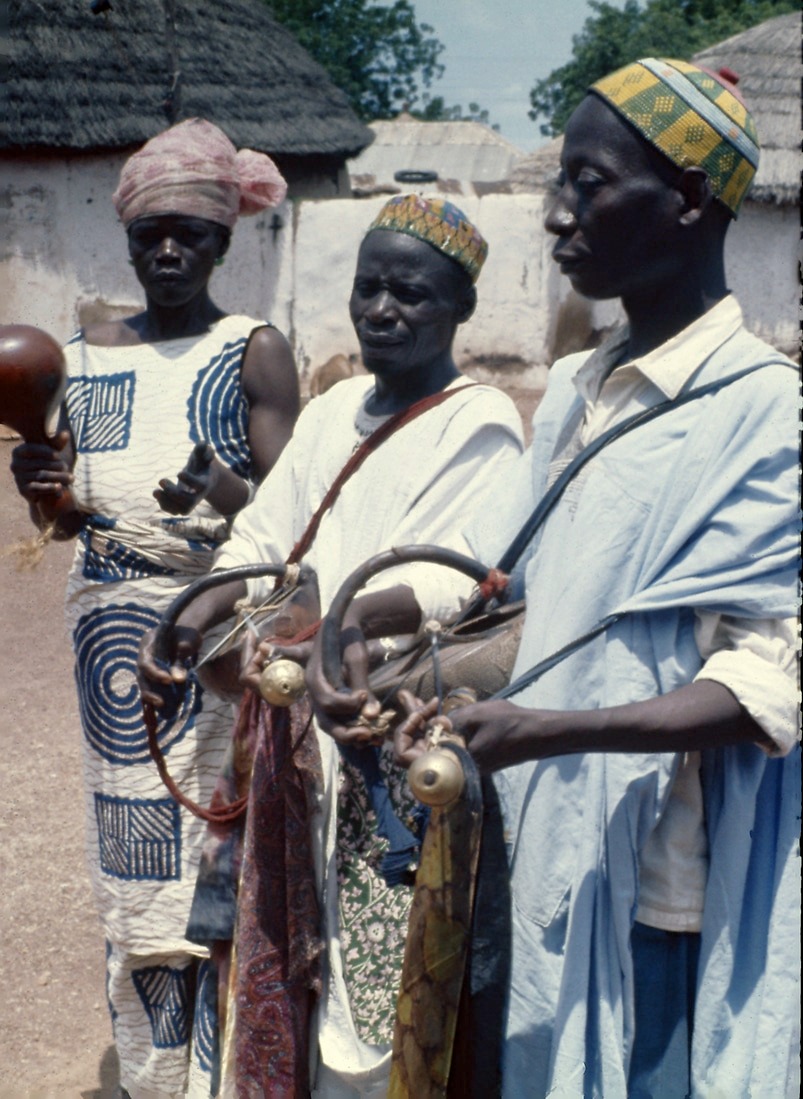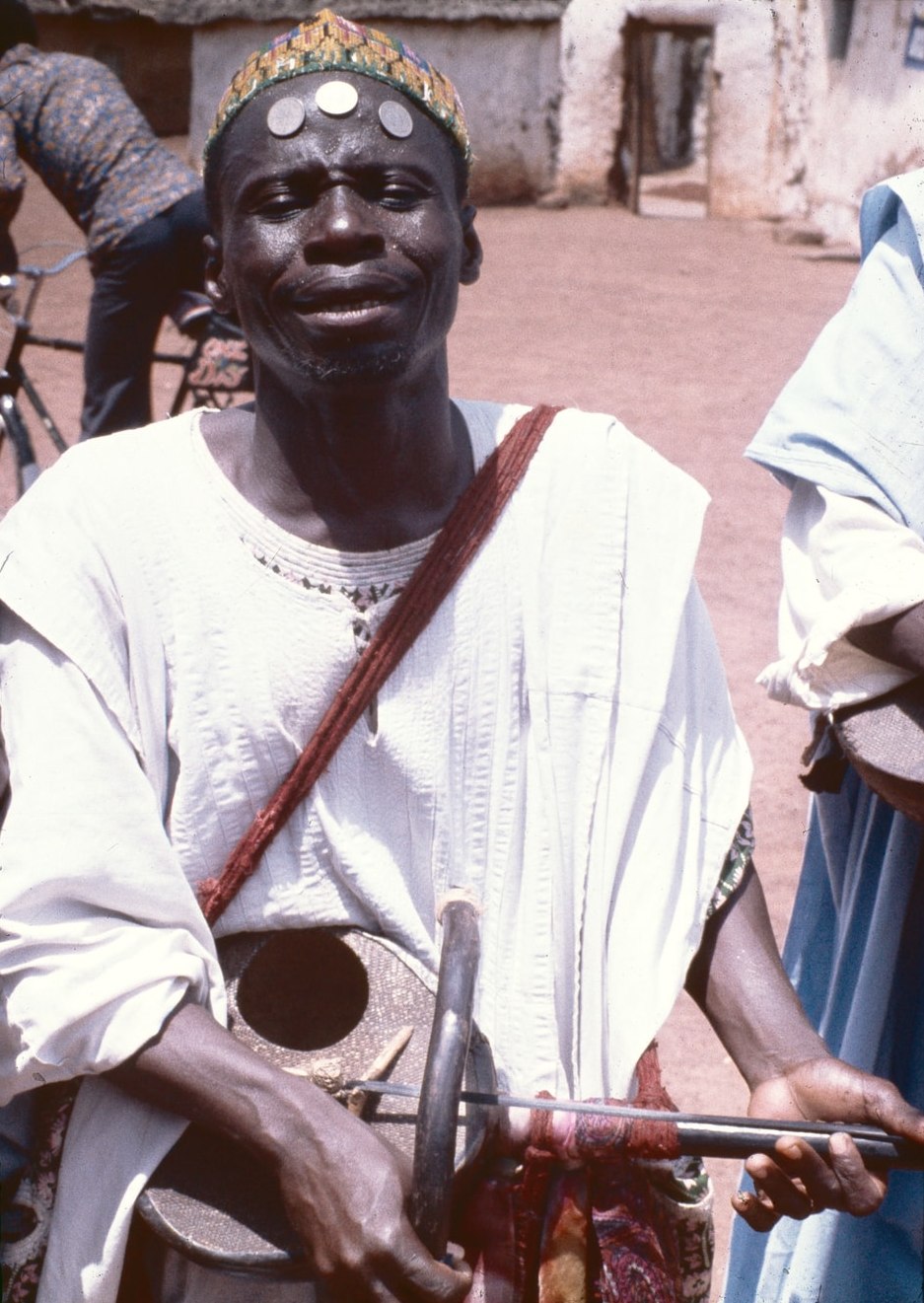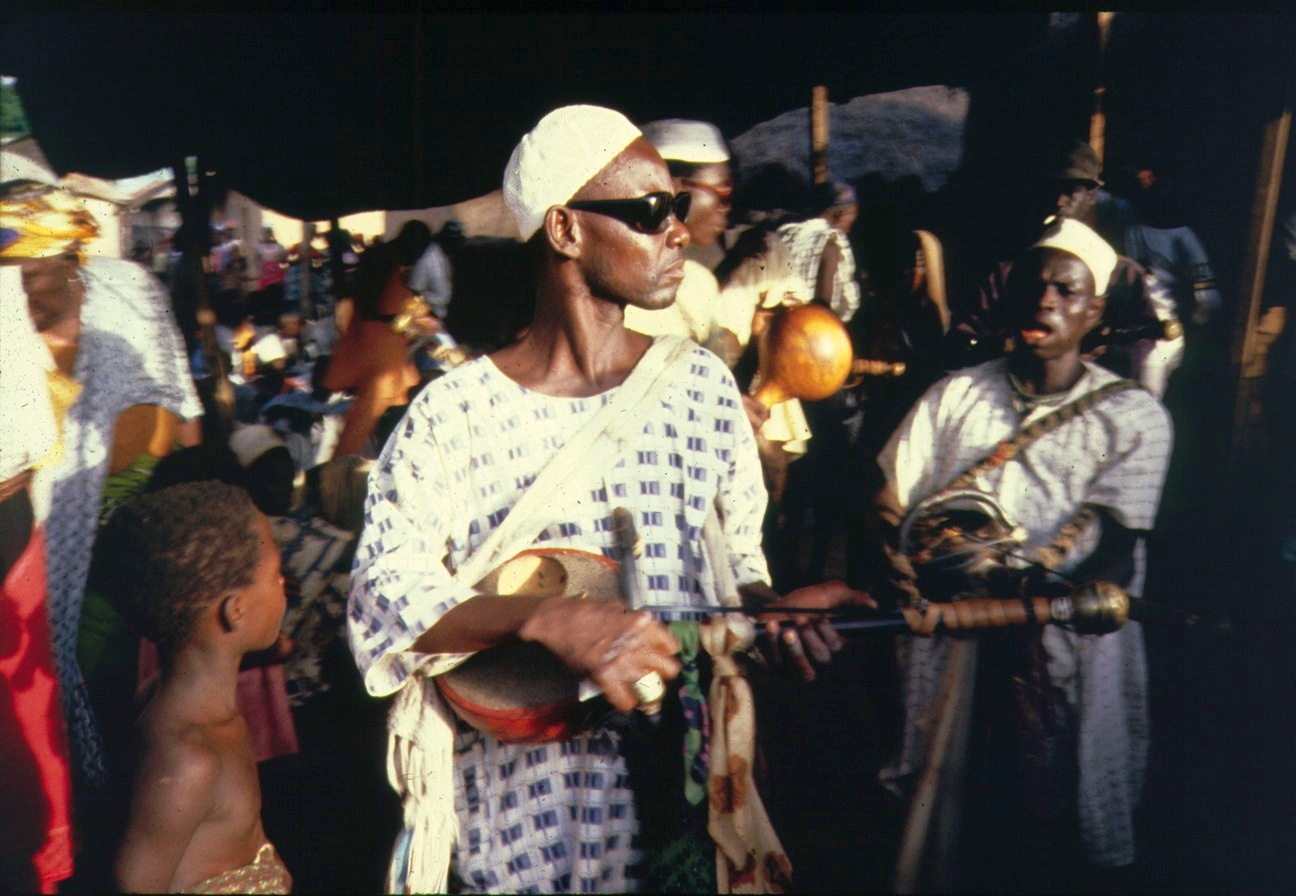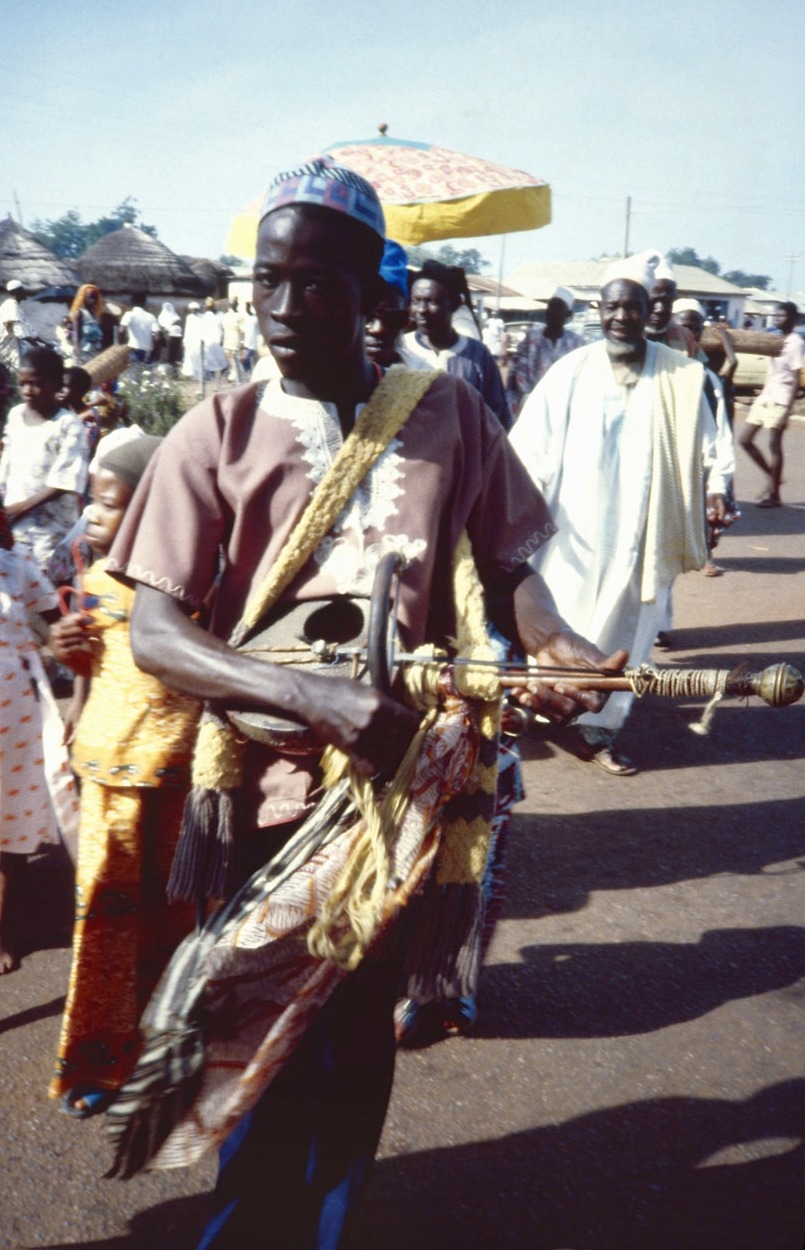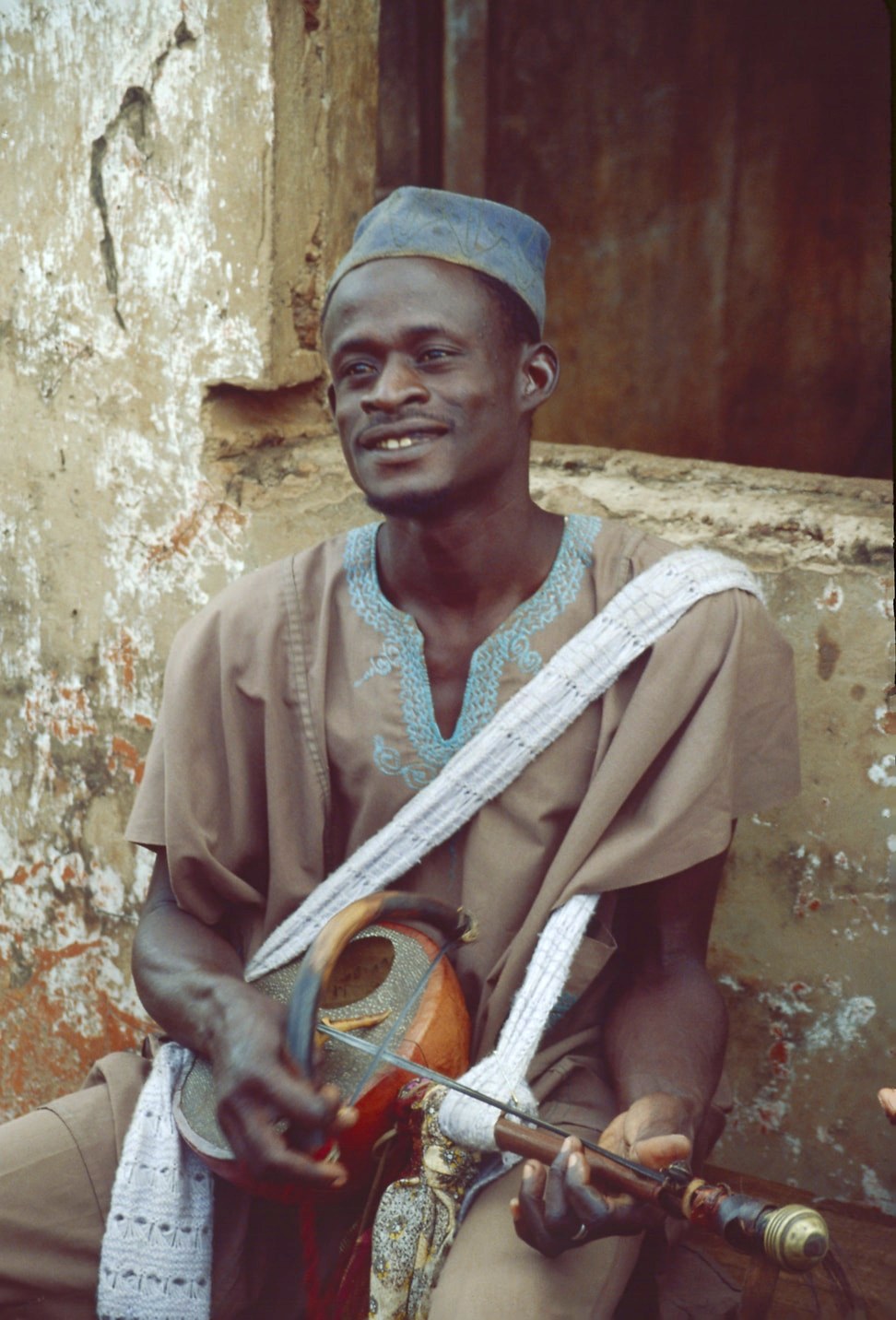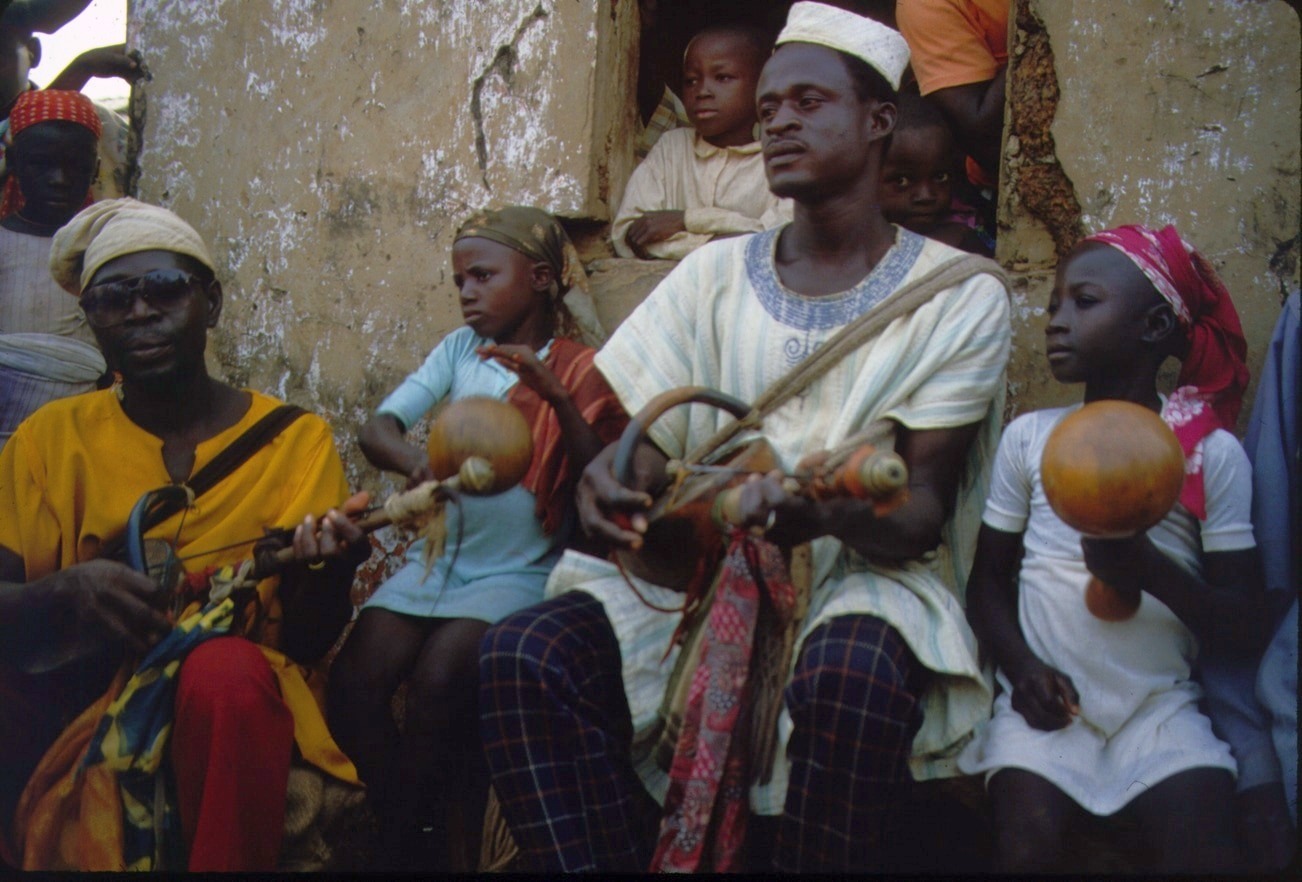“In most goonji songs, the vocal phrasing of the chorus or responsive line is duplicated in the responsive parts of the fiddles. The songs generally begin with this phrasing maintained for enough time to establish the song and its rhythmic dynamic. The leader sings various stanzas against this response, and the song gradually builds in intensity as the tempo quickens and the goonjis take flights on their instruments. Much of the rhythmic drive comes not from solo work but from the music's steady yet shifting pulsations. Goonji music offers a superb illustration of how one may attribute the notion of percussive attack to a fiddler's bowing technique. The rattles' complementary flourishes are broken by extended periods of straightforward yet energized time-keeping, and I cannot think of any other music in which that simple beat from the rattles would seem so stunning.”
“I have experienced nothing quite like dancing to goonji music, and my advice for appreciating the music on this recording is to try to dance to it. Imagine yourself invited by goonjis to dance in the center of a Dagbamba dance circle. When you step into the circle to dance, the musicians surround you. Perhaps there will be three or four goonjis and maybe two rattles. The leader of the goonjis sings and plays his fiddle while the other goonjis drive the music with responsive rhythms and harmonies. The rattles in particular pack a real punch. When the rattle players smack their rattles and accentuate their rhythms, the sound is sharp and penetrating. When all these musicians are playing, the music envelopes you and goes right into your body. When you are dancing, as you feel the beat, the counterrhythms lift you and turn your body. Until you experience the music as something that surrounds you while you move, it is hard to believe that so much intensity and energy can come from a ensemble of fiddles. Because of this palpable energy, as with the two Rounder recordings of Dagbamba drumming, I also recommend listening to the goonji music on headphones at high volume.”
“The goonji songs are often in a local variant of Hausa or in a mixture of Hausa and Dagbani, the Dagbamba language. Actually, although many Dagbamba are multilingual, many are not, and many do not understand what the goonjis are singing. Most people know when they themselves are being praised, but in fact, even some of the younger goonji musicians themselves may not know all the meanings of the songs in their repertoire. Like us, though, those Dagbamba who cannot understand the songs can still enjoy listening or moving to the music. It is a strange and beautiful circumstance that allows us perhaps to share an unmediated experience of music and to bridge some of the cultural differences that might normally separate us from them.”
